Olig2-induced neural stem cell differentiation involves downregulation of Wnt signaling and induction of Dickkopf-1 expression
- PMID: 19093005
- PMCID: PMC2602983
- DOI: 10.1371/journal.pone.0003917
Olig2-induced neural stem cell differentiation involves downregulation of Wnt signaling and induction of Dickkopf-1 expression
Abstract
Understanding stem cell-differentiation at the molecular level is important for clinical applications of stem cells and for finding new therapeutic approaches in the context of cancer stem cells. To investigate genome-wide changes involved in differentiation, we have used immortalized neural stem cell (NSC) line (HB1.F3) and Olig2-induced NSC differentiation model (F3.Olig2). Using microarray analysis, we revealed that Olig2-induced NSC differentiation involves downregulation of Wnt pathway, which was further confirmed by TOPflash/FOPflash reporter assay, RT-PCR analysis, immunoblots, and immunocytochemistry. Furthermore, we found that Olig2-induced differentiation induces the expression of Dickkopf-1(Dkk1), a potent antagonist of Wnt signaling. Dkk1 treatment blocked Wnt signaling in HB1.F3 in a dosage-dependent manner, and induced differentiation into astrocytes, oligodendrocytes, and neurons. Our results support cancer stem cell hypothesis which implies that signaling pathway for self-renewal and proliferation of stem cells is maintained till the late stage of differentiation. In our proposed model, Dkk1 may play an important role in downregulating self-renewal and proliferation pathway of stem cells at the late stage of differentiation, and its failure may lead to carcinogenesis.
Conflict of interest statement
Figures
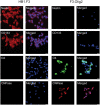
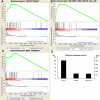
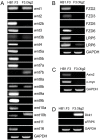

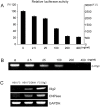
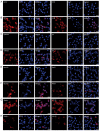
Similar articles
-
Gene expression profiling of human neural progenitor cells following the serum-induced astrocyte differentiation.Cell Mol Neurobiol. 2009 May;29(3):423-38. doi: 10.1007/s10571-008-9338-2. Epub 2009 Jan 7. Cell Mol Neurobiol. 2009. PMID: 19130216 Free PMC article.
-
Hh and Wnt signaling regulate formation of olig2+ neurons in the zebrafish cerebellum.Dev Biol. 2008 Jun 1;318(1):162-71. doi: 10.1016/j.ydbio.2008.03.016. Epub 2008 Mar 21. Dev Biol. 2008. PMID: 18423594 Free PMC article.
-
Stable expression of neurogenin 1 induces LGR5, a novel stem cell marker, in an immortalized human neural stem cell line HB1.F3.Cell Mol Neurobiol. 2010 Apr;30(3):415-26. doi: 10.1007/s10571-009-9466-3. Epub 2009 Oct 8. Cell Mol Neurobiol. 2010. PMID: 19813087 Free PMC article.
-
Impact of WNT signaling on tissue lineage differentiation in the early mouse embryo.Dev Growth Differ. 2011 Sep;53(7):843-56. doi: 10.1111/j.1440-169X.2011.01292.x. Epub 2011 Jul 15. Dev Growth Differ. 2011. PMID: 21762130 Review.
-
Olig2 transcription factor in the developing and injured forebrain; cell lineage and glial development.Mol Cells. 2009 Apr 30;27(4):397-401. doi: 10.1007/s10059-009-0067-2. Epub 2009 Apr 13. Mol Cells. 2009. PMID: 19390819 Review.
Cited by
-
LGR5 is a proneural factor and is regulated by OLIG2 in glioma stem-like cells.Cell Mol Neurobiol. 2013 Aug;33(6):851-65. doi: 10.1007/s10571-013-9951-6. Epub 2013 Jun 21. Cell Mol Neurobiol. 2013. PMID: 23793848 Free PMC article.
-
Endothelial Cells Exposed to Fluid Shear Stress Support Diffusion Based Maturation of Adult Neural Progenitor Cells.Cell Mol Bioeng. 2017 Dec 1;11(2):117-130. doi: 10.1007/s12195-017-0516-5. eCollection 2018 Apr. Cell Mol Bioeng. 2017. PMID: 31719881 Free PMC article.
-
Lithium chloride promotes proliferation of neural stem cells in vitro, possibly by triggering the Wnt signaling pathway.Anim Cells Syst (Seoul). 2018 Nov 30;23(1):32-41. doi: 10.1080/19768354.2018.1487334. eCollection 2019 Feb. Anim Cells Syst (Seoul). 2018. PMID: 30834157 Free PMC article.
-
Efficient Generation of Viral and Integration-Free Human Induced Pluripotent Stem Cell-Derived Oligodendrocytes.Curr Protoc Stem Cell Biol. 2016 Aug 17;38:2D.18.1-2D.18.27. doi: 10.1002/cpsc.11. Curr Protoc Stem Cell Biol. 2016. PMID: 27532816 Free PMC article.
-
Vascular tight junction disruption and angiogenesis in spontaneously hypertensive rat with neuroinflammatory white matter injury.Neurobiol Dis. 2018 Jun;114:95-110. doi: 10.1016/j.nbd.2018.02.012. Epub 2018 Feb 24. Neurobiol Dis. 2018. PMID: 29486300 Free PMC article.
References
-
- Kim SU. Human neural stem cells genetically modified for brain repair in neurological disorders. Neuropathology. 2004;24:159–171. - PubMed
-
- Cattaneo E, McKay R. Proliferation and differentiation of neuronal stem cells regulated by nerve growth factor. Nature. 1990;347:762–765. - PubMed
-
- Kilpatrick TJ, Bartlett PF. Cloning and growth of multipotential neural precursors: requirements for proliferation and differentiation. Neuron. 1993;10:255–265. - PubMed
-
- Temple S. Division and differentiation of isolated CNS blast cells in microculture. Nature. 1989;340:471–473. - PubMed
Publication types
MeSH terms
Substances
LinkOut - more resources
Full Text Sources
Other Literature Sources
Medical
Miscellaneous

